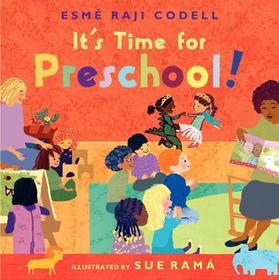
The Mass Market for History Paintings in Seventeenth-Century Amsterdam
Production, Distribution, and Consumption
Series: Amsterdam Studies in the Dutch Golden Age;
- Publisher's listprice GBP 42.99
-
20 538 Ft (19 560 Ft + 5% VAT)
The price is estimated because at the time of ordering we do not know what conversion rates will apply to HUF / product currency when the book arrives. In case HUF is weaker, the price increases slightly, in case HUF is stronger, the price goes lower slightly.
- Discount 10% (cc. 2 054 Ft off)
- Discounted price 18 484 Ft (17 604 Ft + 5% VAT)
Subcribe now and take benefit of a favourable price.
Subscribe
20 538 Ft

Availability
Not yet published.
Why don't you give exact delivery time?
Delivery time is estimated on our previous experiences. We give estimations only, because we order from outside Hungary, and the delivery time mainly depends on how quickly the publisher supplies the book. Faster or slower deliveries both happen, but we do our best to supply as quickly as possible.
Product details:
- Edition number 1
- Publisher Routledge
- Date of Publication 1 December 2025
- ISBN 9781041188445
- Binding Paperback
- No. of pages294 pages
- Size 246x174 mm
- Language English 700
Categories
Short description:
This book explores the low-quality end of the seventeenth-century art market and outlines the significance of that production in the genre of history paintings, which in traditional art historical studies, is usually linked to high prices, famous painters, and elite buyers.
MoreLong description:
Millions of paintings were produced in the Dutch Republic. The works that we know and see in museums today constitute only the tip of the iceberg — the top-quality part. But what else was painted? This book explores the low-quality end of the seventeenth-century art market and outlines the significance of that production in the genre of history paintings, which in traditional art historical studies, is usually linked to high prices, famous painters, and elite buyers. Angela Jager analyses the producers, suppliers, and consumers active in this segment to gain insight into this enormous market for cheap history paintings. What did the supply consist of in terms of quantity, quality, price, and subject? Who produced all these works and which production methods did these painters employ? Who distributed these paintings, to whom, and which strategies were used to market them? Who bought these paintings, and why?
This book explores a part of the art market that has been mostly invisible to scholars. In so doing, it upends many earlier assumptions, and offers new approaches to questions about the Dutch art market.- Rebecca Tucker, Colorado College, The Seventeenth Century (2022),
To my mind, the importance of this publication is hard to overestimate. [...] Jager is the first author to create an impression of the type of paintings that must have accounted for a lion's share of painting output in the Republic; the type of works most Dutch town-dwellers were certainly familiar with. This is a very enlightening, though sometimes also a rather humbling experience, for these are most definitely not the type of works that we know today, from our modern museum galleries, exhibition catalogues and reference works, as CODART's new canon. The book is, therefore, essential reading for anyone who wants to expand their view of painting in seventeenth-century Holland.- Christi M. Klinkert, Curator of Old Masters, Stedelijk Museum Alkmaar. Translated from the Dutch to the English by Lynne Richards.
Oud Holland, February 2022,
Jager's carefully executed study makes a welcome contribution to our understanding of the booming seventeenth-century art market and yields a number of surprising new insights. [...] Jager convincingly shows that history paintings were the most popular type of mass-produced paintings in the extensive inventories of these three Amsterdam art dealers. [...] In short, Jager offers a much needed correction to our understanding of the Dutch seventeenth-century painting by giving us a first extensive insight into the cheaper segment of the market.- Anna Tummers, Leiden University, BMGN Low Countries Historical Review, Volume 136 (2021)
Table of Contents:
Acknowledgements, List of Figures and Tables, List of Abbreviations, Introduction, 1. The trade in cheap history paintings: Dammeroen, Doeck and Meijeringh, 2. 'Bunglers' and 'duds': the painters listed in Doeck and Meijeringh's inventories and their career prospects, 3. Painting by numbers: the production of 'dime-a-dozen' works in Dammeroen, Doeck and Meijeringh's art shops, 4. History paintings in Amsterdam households, 1650-1699, Conclusion, Bibliography, Index.
More




